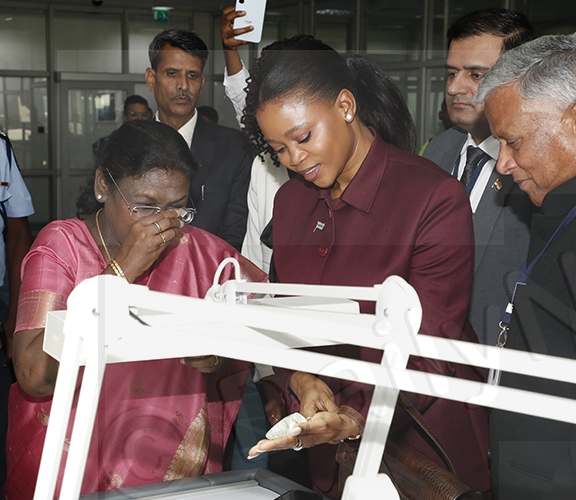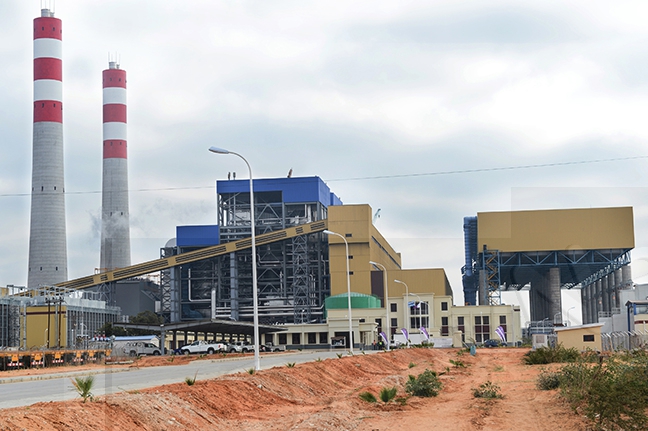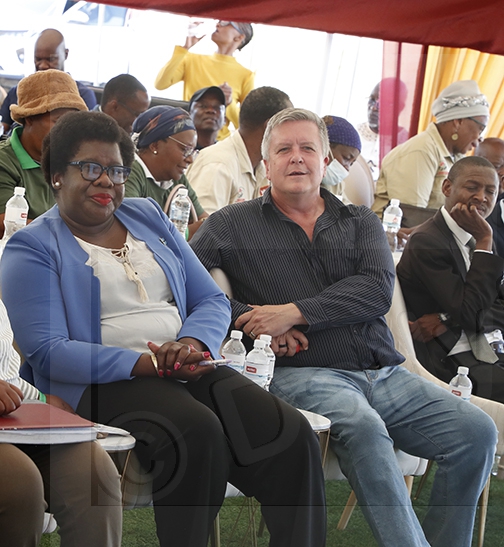Mining sector shows recovery signs
29 Mar 2021
Minister of Mineral Resources, Green Technology and Energy Security (MMGE), Mr Lefoko Moagi says the mining sector is showing signs of recovery after the devastating COVID-19 pandemic affected both production and sales of minerals.
Giving an update on his ministry’s programmes and projects for the 2020/2021 financial year, Mr Moagi said the signs of recovery were mainly due to companies re-arranging their operations and recovering from the COVID-19 impact which had earlier led to restrictive containment measures, including social distancing, remote working, and the closure of commercial activities.
He specified that the ministry had seen signs of recovery with copper prices increasing from US$2.57/lb end of 2019 to US$3.52 (37 per cent) by the end of 2020 while gold prices had shown an increase from US$1270/oz end of 2019 to US$1524 (20per cent) by end of 2020.
“What is also encouraging is that investors have started showing optimism for the development of minerals in the country and this has led to Maatla Energy Resources being granted a mining license for the development of a coal mine in Mmamabula coalfields. Some other existing companies are also investing money to increase the life of Mine and production such as Karowe diamond underground Mine expansion, Morupule coal open cast extension, and Jwaneng Mine post cut 9 studies which are focused on an underground mine,” he said.
Despite the difficulty, posed by the COVID-19 pandemic, the industry has seen positive consumer demand for diamond jewelry since the beginning of the holiday season, supporting the continuation of demand for polished diamonds from the midstream sector, he said.
This, in turn, he said supported a steady demand for rough diamonds in the last quarter of 2020, while the diamond industry ended the year 2020 on a positive note.
He said it was worthy recognising the risks that the on-going COVID -19 pandemic presented to the sector recovery as we head into 2021. “As part of interventions to mitigate against the travel restrictions globally, my ministry authorised diamond producers to take diamonds directly to the markets in Europe and Asia to sell, after valuation by our government diamond valuers. While the sales have resumed, the market remains fragile,” he said.
Mr Moagi highlighted that the Orapa Mine Cut 3 Project was still at the feasibility stage and the project has been deferred following the optimization of Orapa Cut 2, which has extended the life of Cut 2.
He said preparatory works were planned to start in 2023 and waste stripping in 2026, with various mining sequences and production schedules being explored with the objective of delivering the most optimal business case for implementation.
“As part of cost reduction measures, Orapa Plant No.1 will be decommissioned due to its old age and high maintenance costs, and Damtshaa Mine will be placed under care and maintenance with effect from April 2021 because it is currently loss-making. While on care and maintenance, Debswana will evaluate the best options for Damtshaa Mine going forward,” he underlined.
He said the development of Morupule Coal Mine’s Motheo Project was progressing well, and the open cast mine would commence operation in October 2021 and the plant would be commissioned by December 2021.
Mr Moagi said the project would produce 1 million tonnes per annum of washed coal to be sold locally and regionally. The Mining Coal project at Medie in Kweneng District continued both its development and production activities in 2020 and the coal processing plant for the mine was under construction and it was expected to reach full production capacity by the first half of 2021.
“Khoemacau Copper Mining has completed the construction of three box cuts at Zone 5. The first ore mined was moved in October 2020. The haul road from Zone 5 Mine to the Bosetu processing plant at Toteng is now complete. The processing plant is under refurbishment and development will be complete in May 2021. The Mine currently employs 2 131 persons, of which 1 952 (91.6 per cent) are citizens,” he said.
On other issues, Mr Moagi said the ministry strived towards sustainable and secure energy supplies, by creating an enabling regulatory environment for stimulating private sector participation in local power generation. especially for renewable and cleaner energy sources.
He said that Botswana Energy Regulatory Authority (BERA) has licensed Botho Park at the Botho University Campus, Feune being Airport junction Mall, Bank of Botswana, Okavango Diamond Trading Company, Primetime Property Holdings at Sebele Mall, Thobo Energy at Francistown, and Diamond Trading Company Botswana (DTCB) for Solar Photovoltaic Plants producing over 100Kva.
Mr Moagi highlighted that Tlou Energy was also issued with an IPP license for local power generation under the government’s Coal Bed Methane (CBM) power generation programme.
In addition to driving towards the goal for self-sufficiency in local power generation through increased participation of Independent Power Producers (IPPs), Mr Moagi underlined that the authority continued to facilitate private investment in power generation for exports.
To date, the authority has issued licenses to two IPPs (Sese Power and ENRC) for power export, he said.
Further, he said the ministry was in the process of migrating to cost-reflective electricity tariffs to enable further investment in the sector, sustainable provision of service by the utility, and efficient use of electricity.
To this effect, BERA reviewed the Botswana Power Corporation (BPC) electricity tariffs for the financial years 2020/2021 and 2021/2022, and tariff increases of 22 per cent and 3 per cent respectively were awarded to BPC, he said.
“Despite these increases, electricity tariffs are still not cost-reflective hence necessitating review on an annual basis. My ministry has started the implementation of the Rooftop Solar programme into the grid. The programme guidelines were developed for end-users who can generate their own electricity and sell the excess to BPC,” he said.
Mr Moagi underpinned that the development of the included applicable rules, regulations, standards, tariffs as well as a review of implementation processes (such as metering, interconnection, vending, and billing).
“The Rooftop Solar Programme would run for a period of three years, with the system-wide aggregate capacity of 10MW in the first 12 months. The programme was launched on the November 3 2020 and applications (through the BPC website) were opened for both Commercial, Industrial, and Domestic BPC customers from November 30, 2020, until the aggregate capacity limit of 10MW is reached. Sixty applications have been received between 1st of December 2020 and February 15, 2021 consisting of 50 domestic and 10 business applications. The evaluation of the submissions is ongoing,” he said.
The minister explained that the ministry had also developed an Integrated Resource Plan for Electricity Generation (IRP) to establish a robust electricity generation build Programme from 2020 until 2040.
Mr Moagi highlighted that implementation of the IRP was envisaged to add approximately 1,540MW of new generation capacity by 2040 and the projects were earmarked to be by Independent Power Producers (IPP).
Mr Moagi reiterated that the majority of the planned new capacity would be from renewable energy sources such as solar and wind.
Currently, he said, about 60 per cent of the national electricity demand of 600MW was being met from domestic generation facilities (Morupule A and B) while the balance was imported from other power utilities in the Southern African Pool (SAPP).
He said the country mitigated the risk of power supply shortfall through diesel-based emergency power generation facilities at Orapa (90MW) and Matshelagabedi (70MW) as the said power imports are limited due to demand exceeding installed generation capacity in the region as a whole.ENDS
Source : BOPA
Author : Marvin Motlhabane
Location : Gaborone
Event : Update
Date : 29 Mar 2021






